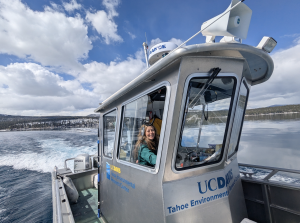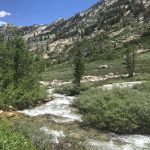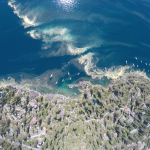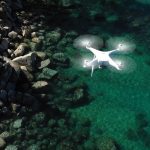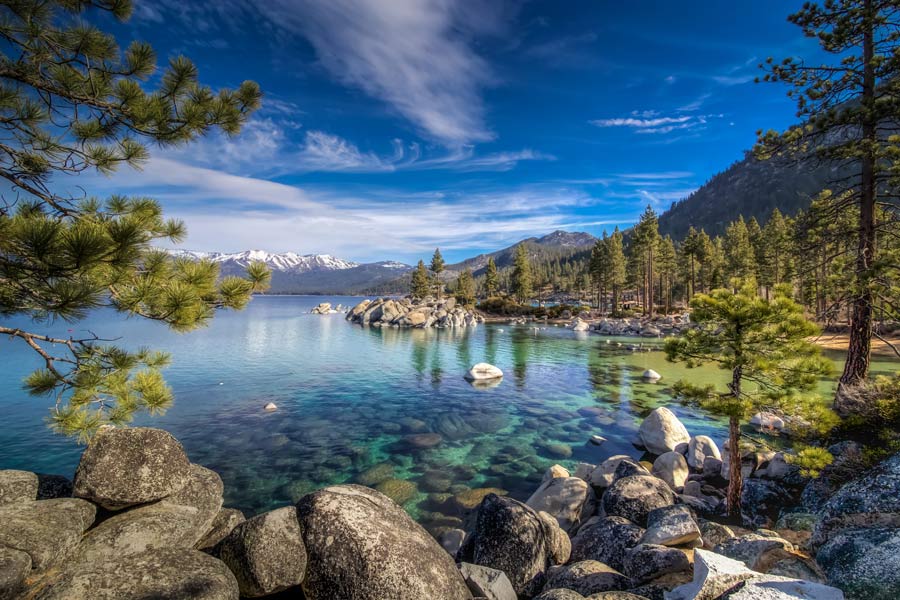Ask a scientist: Meet Tahoe Environmental Research Center’s new director
Stephanie Hampton, an aquatic ecologist with a career spanning continents, recently stepped into her new role as Director of the U.C. Davis Tahoe Environmental Research Center (TERC) this spring. Tahoe Magazine caught up with the scientist to discuss the center’s current research at Lake Tahoe and why tiny particles in the water can tell us big things about the future of our lakes.
What led you to Tahoe and your new position as Director at TERC?
I’m a freshwater biologist and have spent my career studying life in lakes — from microscopic plankton and algae to aquatic insects, plants, and fish. Over the years, I began focusing on long-term datasets from large lakes, including Lake Washington in Seattle and Lake Baikal in Siberia. These lakes, like Tahoe, are ancient, nutrient-poor, and incredibly blue. Working with these datasets really shaped my interest in how lakes change over time and how we can learn from each other’s research globally.
Tahoe is iconic — not just to freshwater scientists, but to anyone who’s spent time there. It’s beautiful, ecologically unique, and deeply cherished by people. Professionally, it’s a place with a rich history of research and long-term data, which makes it incredibly valuable for understanding how lakes respond to change. And personally, it’s incredibly satisfying to be part of protecting such a special place.
You conducted research at the deepest lake in the world, Lake Baikal, for many years. What was that like?
Lake Baikal has been a really special part of my career. I researched the lake for 18 years as part of a collaboration with Russian scientists who have been collecting long-term data on the lake — close to 70 years now, which is incredibly rare. It’s the world’s oldest and deepest freshwater lake, and like Tahoe, it’s ultra-oligotrophic, meaning it’s naturally very low in nutrients and incredibly clear and blue. Our research focused mainly on the plankton — the microscopic plants and animals in the water — and how their populations were changing over time, especially in response to climate and environmental changes. I traveled to Baikal every couple of years, and when we were there, we would work long days collecting as much data as we could. It’s remote, beautiful, and biologically unique.
From your perspective, what are the biggest environmental challenges facing Tahoe right now?
Climate variability is huge — especially for mountain lakes. Winters are becoming less predictable, with extremes in snow and rain. Wildfires are another big concern, and we’re still learning how fire impacts lakes. These are challenges not just for Tahoe, but for many lakes across the West.
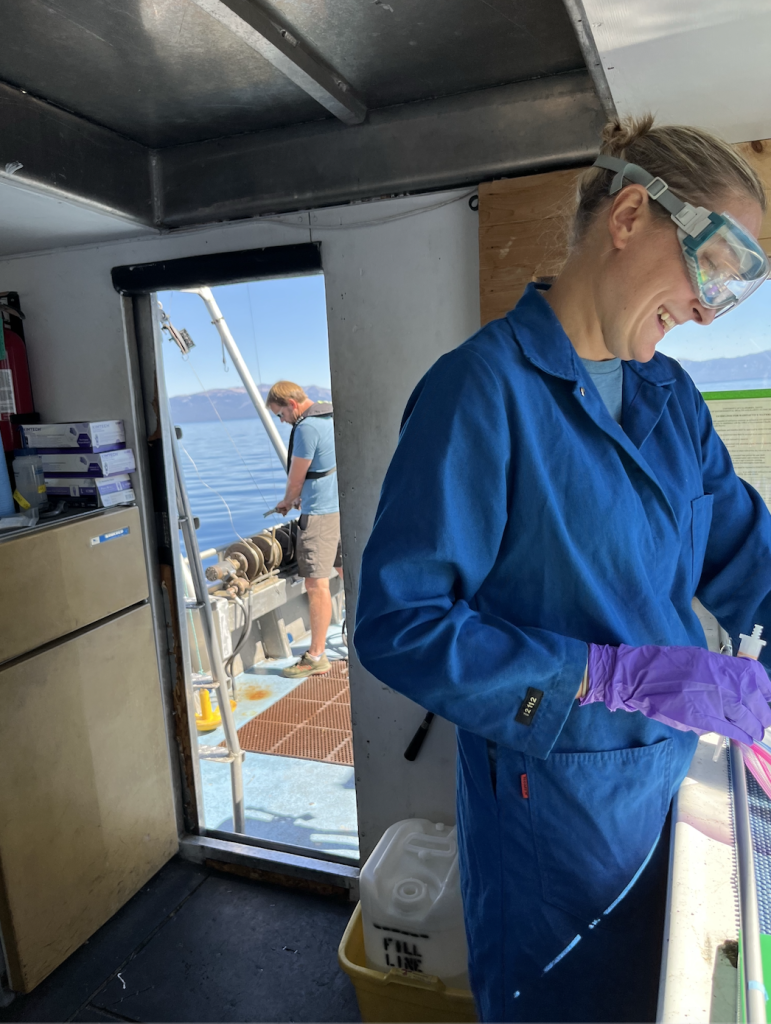
What areas of research need more attention right now?
I’m still new here, but I’d say the interaction between the nearshore and offshore parts of the lake is really important. The nearshore zone is where people most often experience the lake, and it’s also a hotspot for biological activity where aquatic plants grow and fish and other organisms may use that area of the lake for breeding or feeding. It’s where snowmelt first hits the lake and anything unusual about the snowmelt that year might manifest its first effects and where debris from disturbances like wildfires ends up first. So I think continuing to study the connections between nearshore and offshore is really exciting and important.
What are some other important research projects going on at TERC?
I think over the past several decades, researchers at Tahoe have been leaders in understanding how climate and weather events affect the mixing patterns of the lake. When you get a big exchange of water between the very deep water of the lake and the surface, the whole pattern of nutrients, oxygen, and temperature changes in the lake. That ultimately affects the nutrients available for the growth of algae and also the water clarity of the lake. That’s really decades of hard work to understand more about those dynamics, and it’s going to be increasingly important as we see climate and weather patterns change over time.
Other projects that are ongoing now include monitoring nearshore blooms of algae, and we’ll be putting more research effort into understanding what may be causing them in the coming years. But TERC’s work goes beyond Tahoe as well, with long-term research on other lakes in the Sierra, looking at how changes in snowpack and temperature affect the ecology of those lakes.
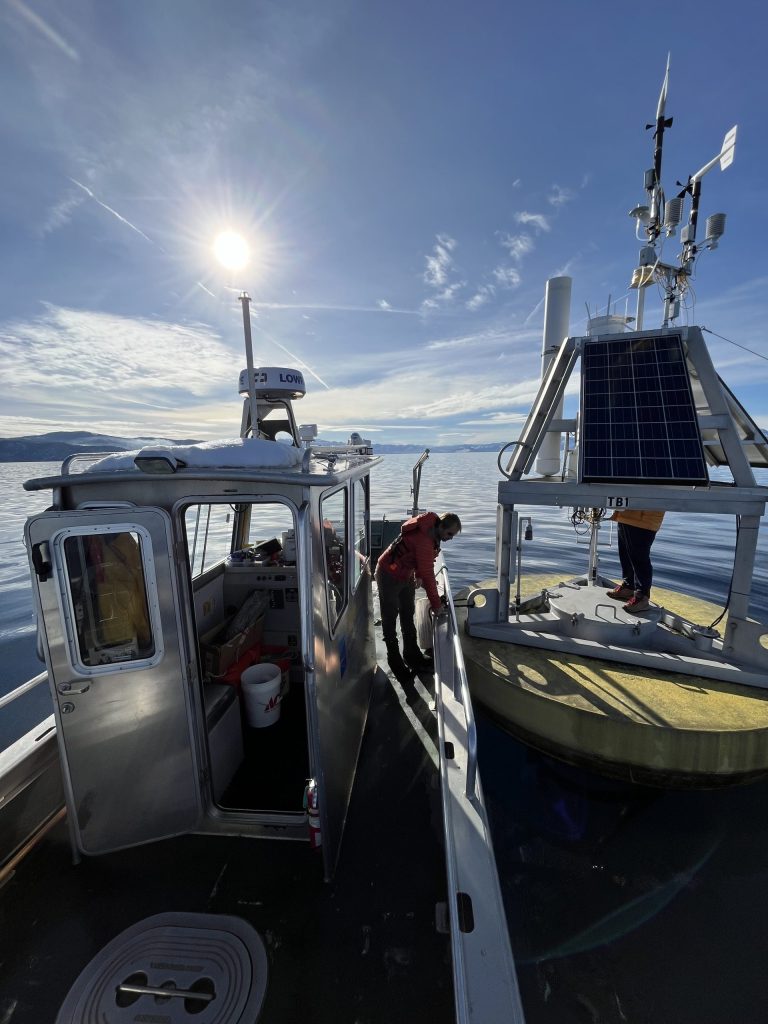
Is TERC using any new cutting-edge technology in lake monitoring?
We are currently borrowing a device that creates holographic images of microscopic particles and organisms using lasers. You don’t have to take a sample out of the lake and then take it back to your lab and look at it under the microscope. You can actually put this instrument into the lake and see images of the microscopic life. Some of our scientists have been using it to look at microscopic particles to see how they’re impacting water clarity.
Artificial intelligence has substantially advanced in its ability to identify different organisms. I think this could be one of the developments that really improves our monitoring capabilities and overall data collection — helping us see who is represented underwater in their natural habitat and giving us a better idea of what they’re actually doing.
Why is studying microorganisms in a single alpine lake important on a broader scale?
It’s a great question — and one I’ve thought about a lot. Most of the work I do is part of large, collaborative studies involving many lakes around the world. We’re trying to generalize principles about how lakes behave so that we can understand how their dynamics will affect the things that people care about, like water quality or habitat for wildlife. We get a lot from understanding our lakes in the context of other lakes.
Editor’s note: This article originally appeared in the Summer 2025 edition of Tahoe Magazine.

Support Local Journalism

Support Local Journalism
Readers around the Lake Tahoe Basin and beyond make the Tahoe Tribune's work possible. Your financial contribution supports our efforts to deliver quality, locally relevant journalism.
Now more than ever, your support is critical to help us keep our community informed about the evolving coronavirus pandemic and the impact it is having locally. Every contribution, however large or small, will make a difference.
Your donation will help us continue to cover COVID-19 and our other vital local news.
